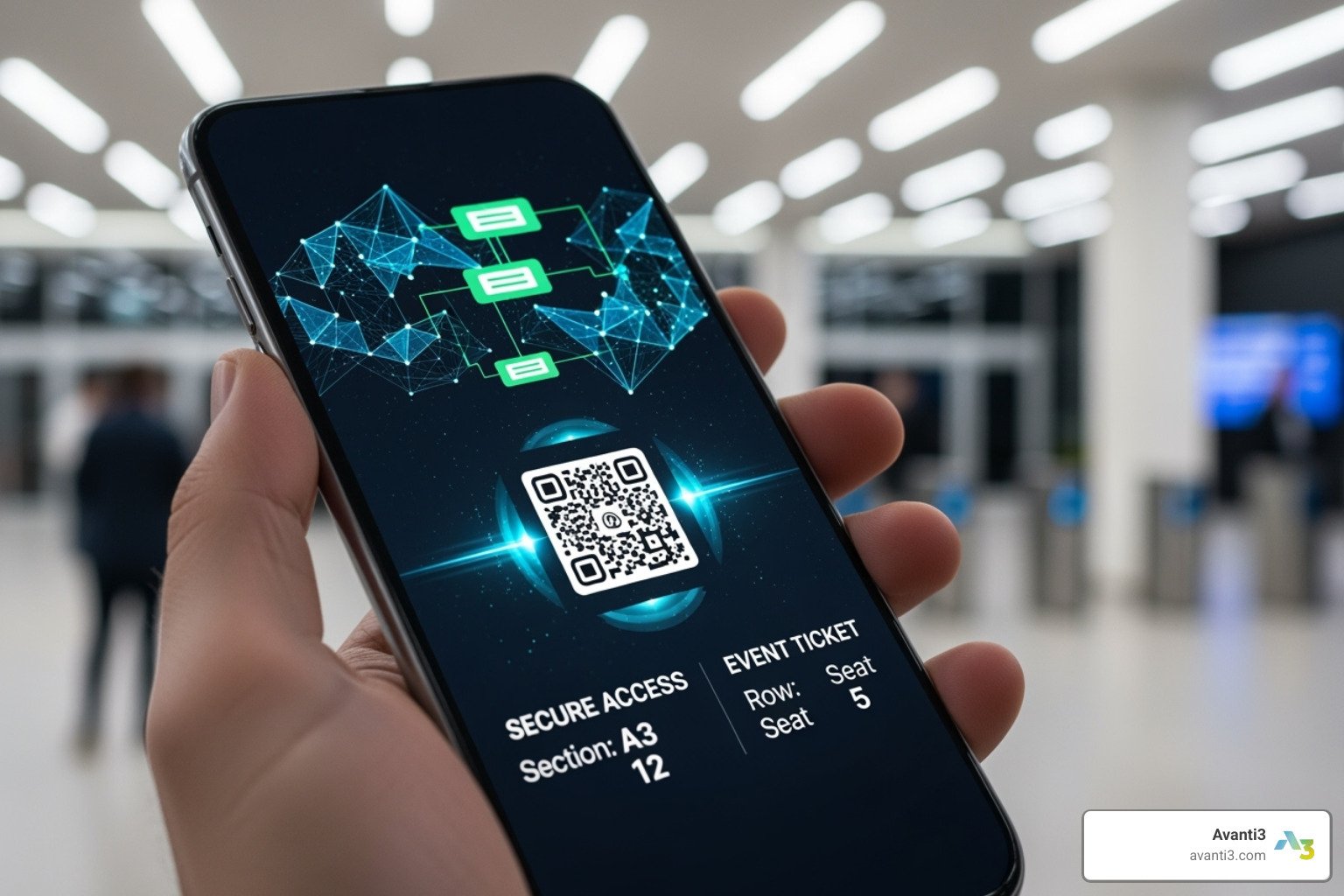NFT ticketing platforms: 4 Steps to Fix Broken
Why Traditional Ticketing is Broken and How NFTs Offer a Fix
NFT ticketing platforms are revolutionizing how events handle access, security, and fan engagement by using blockchain technology to create unique, verifiable digital tickets. Here’s what makes them different from traditional ticketing:
Top NFT Ticketing Platform Benefits:
- Fraud Prevention: Blockchain verification eliminates counterfeit tickets
- Scalping Control: Smart contracts can cap resale prices and block transfers
- New Revenue Streams: Creators earn royalties on secondary market sales
- Improved Fan Experience: Tickets become collectible digital assets with exclusive perks
- Transparent Ownership: Immutable ledger tracks every transaction
The numbers tell a stark story about traditional ticketing’s problems. The ticketing industry suffered from 39.9% bad bot traffic in 2019, compared to just 21.8% across all other industries. Meanwhile, sports websites faced an even worse 57.1% of incoming traffic from bad bots.
These platforms solve real problems that plague live events today. Instead of generic QR codes that disappear after use, NFT tickets become permanent digital collectibles that fans actually want to keep. They can include exclusive content, grant access to special areas, or even open up future benefits.
Major events have already started experimenting with NFT ticketing. For example, Coachella’s lifetime pass NFTs sold for $1.5 million total, proving there’s real demand for this technology.
I’m Samir ElKamouny AV, and I’ve helped countless businesses transform their customer engagement through innovative digital solutions, including implementing NFT ticketing platforms for improved fan experiences. Let me walk you through exactly how to implement these game-changing solutions for your events.
Glossary for NFT ticketing platforms:
A Practical Guide to Implementing NFT Ticketing Platforms
The journey into NFT ticketing platforms might seem daunting at first, but with a clear roadmap, it’s an exciting leap forward for any event organizer. We’re not just talking about digital tickets; we’re talking about a complete paradigm shift that empowers us to create more secure, engaging, and profitable events. Let’s explore the practical steps.
Step 1: Understanding the Core Benefits of NFT Ticketing Platforms
At the heart of why we accept NFT ticketing platforms is their unparalleled ability to combat the persistent issues that plague traditional ticketing. Think of it as installing a digital shield around our events.
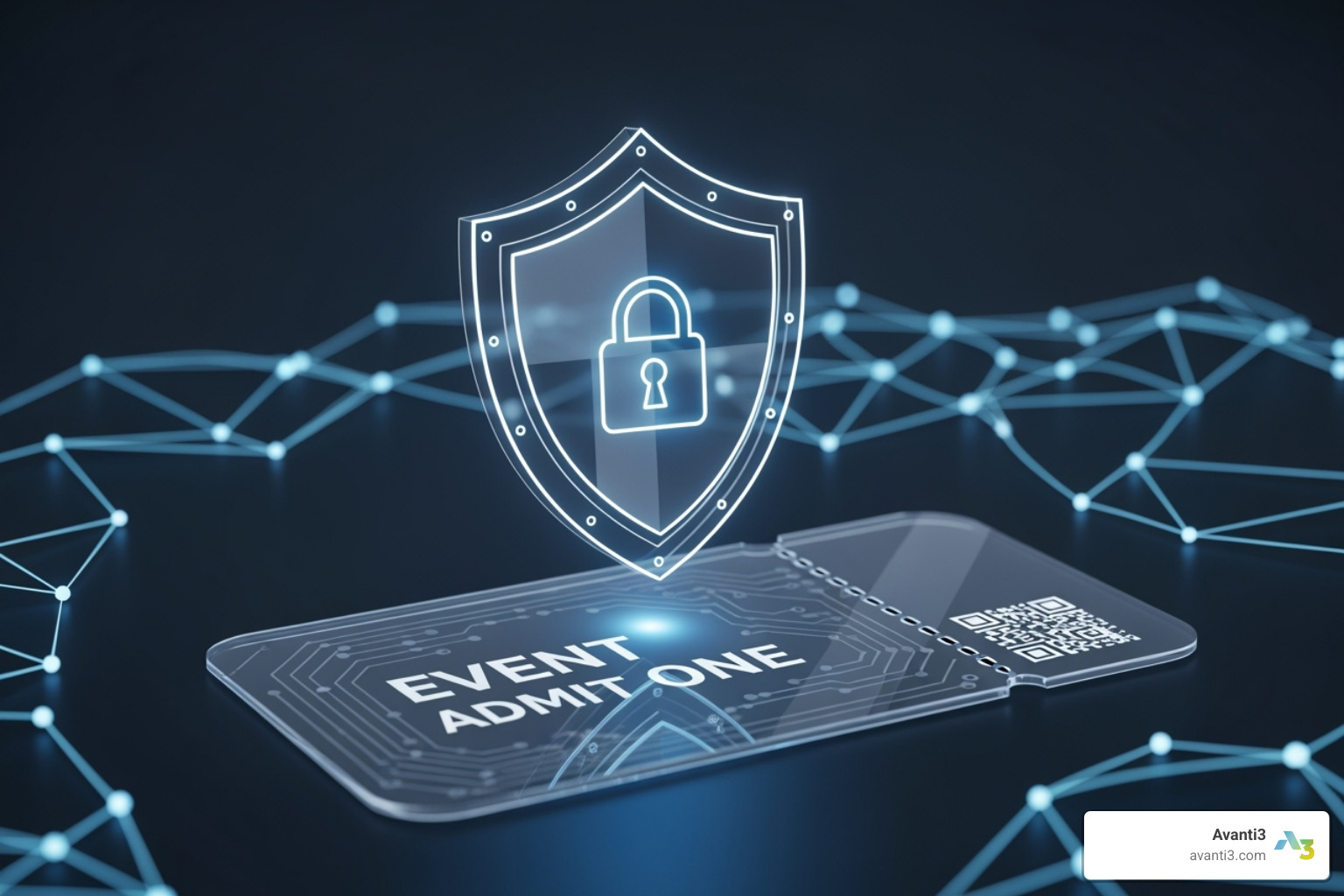
First and foremost, these platforms offer robust counterfeit prevention and fraud reduction. Unlike paper tickets or easily copied QR codes, each NFT ticket is a unique, verifiable digital asset recorded on a blockchain. This immutable ledger means every transaction, every ownership transfer, is transparent and permanently logged. There’s no more “is this ticket real?” anxiety for attendees or “did someone sneak in?” worries for us. The cryptographic nature of NFTs ensures near-inviolable authenticity, effectively eliminating the risk of fake tickets. The ticketing industry has historically been a prime target for bad actors, suffering from nearly 40% bad bot traffic. With NFTs, we cut off their supply.
Secondly, NFT ticketing platforms give us unprecedented control over the secondary market and the notorious problem of scalping. Through smart contracts – self-executing agreements coded directly into the NFT – we can embed rules for resale. This means we can set price caps to prevent exorbitant markups, ensuring tickets remain affordable for true fans. We can also program royalty splits, so a percentage of every secondary sale goes back to the artist or organizer. Imagine still earning revenue from a ticket that changes hands five times! This promotes equitable revenue distribution and discourages predatory resale practices. If we choose, we can even make tickets non-transferable or block transfers entirely, effectively stopping bots in their tracks. This level of control was simply impossible with traditional systems.
This improved security and transparency not only protects our revenue but also builds immense customer trust. When attendees know their tickets are legitimate and that we’re actively working to curb scalping, their experience starts on a positive note long before the event even begins. It’s about restoring integrity to the ticketing process.
For more information on the underlying technology, you can explore how blockchain is used for blockchain art authentication.
Step 2: Open uping New Opportunities for Engagement and Revenue
Beyond just fixing problems, NFT ticketing platforms truly open up a world of new possibilities for engaging with our audience and generating revenue. This is where the magic really happens, turning a simple entry pass into a dynamic, valuable asset.
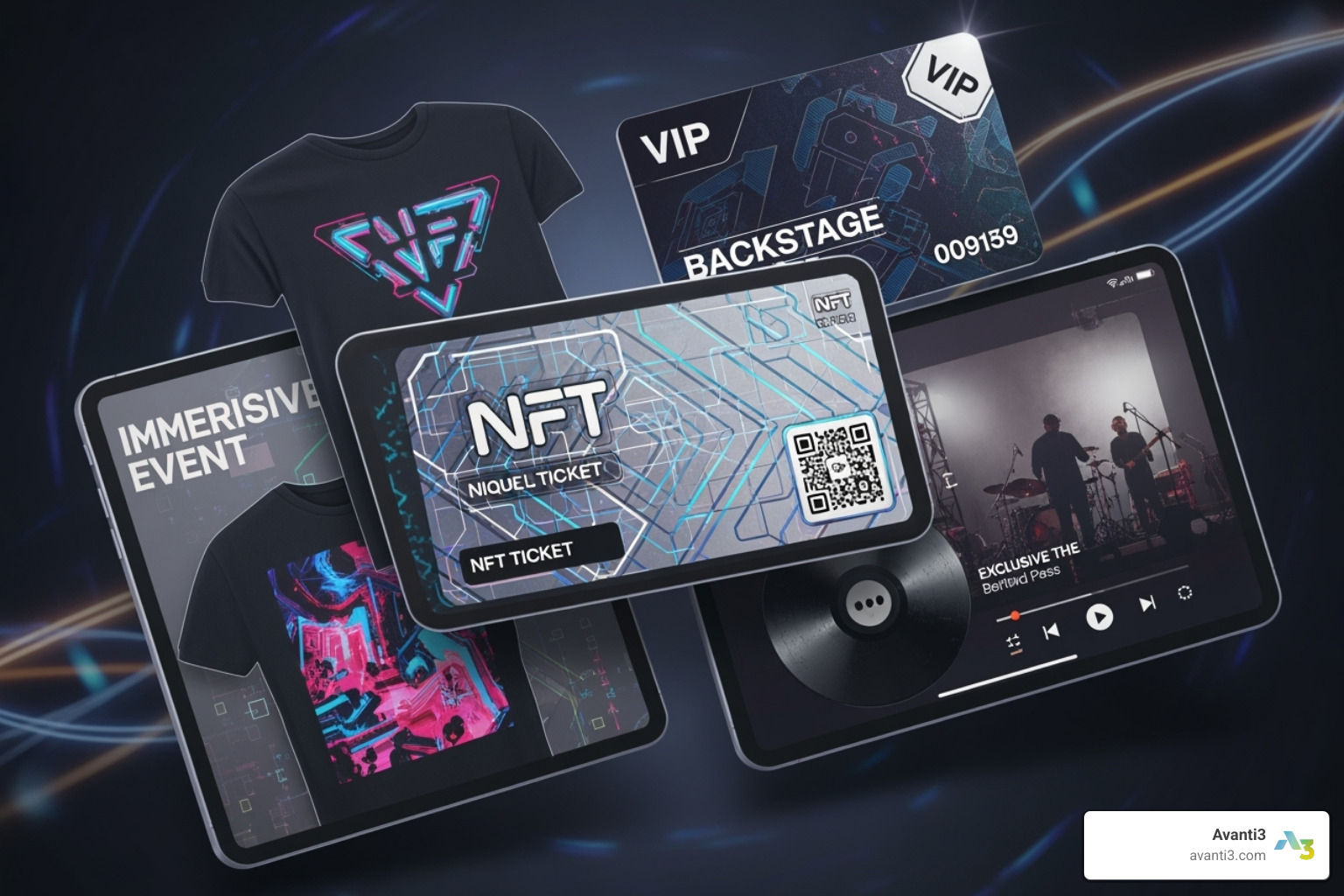
One of the most exciting aspects is the ability to create digital collectibles. An NFT ticket isn’t just a barcode; it can be a beautifully designed piece of digital art, a memento of the event that fans genuinely want to keep. We can design them to tell the story of the event, making them unique keepsakes. This collectibility fosters a deeper connection between fans and our brand, changing a fleeting experience into a lasting digital memory.
These digital collectibles can also open up a treasure trove of benefits. Imagine offering exclusive content like unreleased tracks, behind-the-scenes footage, or digital merchandise directly linked to the NFT ticket. We can provide lifetime passes to future events, as Coachella famously did with their Coachella Keys Collection, which sold for a staggering $1.5 million. This isn’t just about entry; it’s about building a loyal, engaged community.
Furthermore, NFT ticketing platforms open up entirely new revenue streams. As mentioned before, we can implement perpetual royalties on secondary market sales. This means every time an NFT ticket is resold, we automatically receive a percentage, turning what was once lost revenue into a continuous income stream. We can also use NFT tickets as a basis for decentralized crowdfunding, allowing fans to pre-finance events and even vote on certain aspects, creating a sense of ownership and investment in our success.
The utility of these NFT tickets can extend far beyond the event itself. They can serve as gateways to exclusive online communities, provide early access to future ticket sales, or even grant unique perks at the venue, like food and drink deals or special meet-and-greet opportunities. This continuous engagement helps us foster a vibrant community building around our events and artists.
By leveraging these capabilities, we’re not just selling tickets; we’re selling unique experiences, fostering lasting connections, and building sustainable revenue models for the future of entertainment. For more insights into how we improve fan engagement, check out our resources on digital fan engagement.
Step 3: Choosing the Right Type of NFT Ticket
When implementing NFT ticketing platforms, it’s not a one-size-fits-all situation. The beauty of this technology lies in its flexibility, allowing us to choose different “flavors” of NFT tickets to best suit our event’s needs and audience. Understanding these types is crucial for a successful rollout.
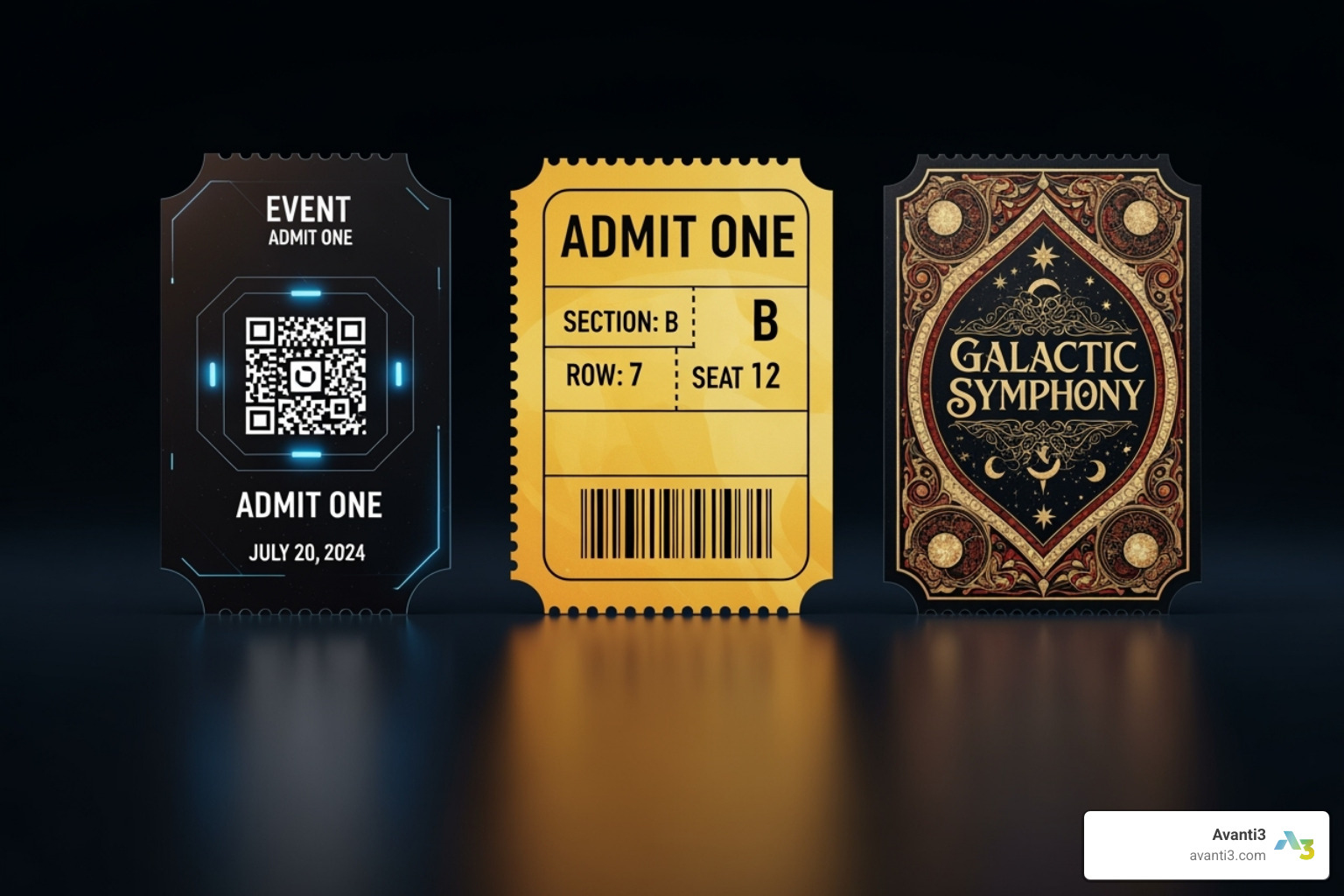
Here are the three primary types of NFT tickets we can consider:
-
Standalone NFT Tickets:
These are pure-play NFT tickets that serve as the sole means of entry. Attendees typically need a Web3 wallet to receive and display these tickets. This type offers the highest level of security and control, as all transfers and verifications happen on the blockchain.- Use Cases: Ideal for events with a crypto-savvy audience or those looking to fully accept Web3. They are excellent for reducing scalping because they require Web3 wallets and blockchain transfers, making it harder for bots to operate. Think exclusive concerts, Web3 conferences, or limited-access experiences where we want maximum control and authenticity.
-
Digital Twin NFT Tickets:
This approach blends the best of both worlds. Attendees receive a conventional ticket (e.g., a QR code) for entry, but they are also automatically issued a corresponding NFT ticket that mirrors the conventional one. This means entry can be gained with either the traditional ticket or the NFT.- Use Cases: Perfect for onboarding a broader audience who might not be familiar with Web3. It allows us to introduce the benefits of NFT ownership (collectibility, perks) without alienating less tech-savvy attendees. This approach has been successfully used by major event organizers who issue commemorative NFT tickets alongside traditional ones. It’s a fantastic way to offer an improved experience while maintaining accessibility.
-
Commemorative NFT Tickets:
These NFTs are purely digital memorabilia and do not grant event admittance. They are issued before or after an event to serve as a cherished digital reminder of the experience. Attendees would still use a traditional ticket for entry.- Use Cases: Great for adding value and collectibility to any event without changing the primary ticketing process. We can issue these for major sports games (like the NFL’s commemorative NFTs displaying game details), festivals, or even as rewards for loyal fans. They’re excellent for fostering long-term engagement and brand loyalty, allowing fans to “own the moment” even after the event is over.
Each type offers unique advantages, and we can even combine them for different tiers of access or fan engagement. For instance, we might offer a Digital Twin for general admission and a Standalone NFT for VIP access, while everyone receives a Commemorative NFT post-event. This strategic choice helps us maximize the benefits of NFT ticketing platforms for our specific event goals. We continuously explore how to integrate these digital assets into sophisticated digital reward systems.
Step 4: Selecting Key Features for Your NFT Ticketing Platforms
Once we’ve understood the core benefits and chosen our preferred NFT ticket types, the next critical step is to select the right NFT ticketing platforms that offer the features necessary to bring our vision to life. This isn’t just about minting NFTs; it’s about building a robust ecosystem.
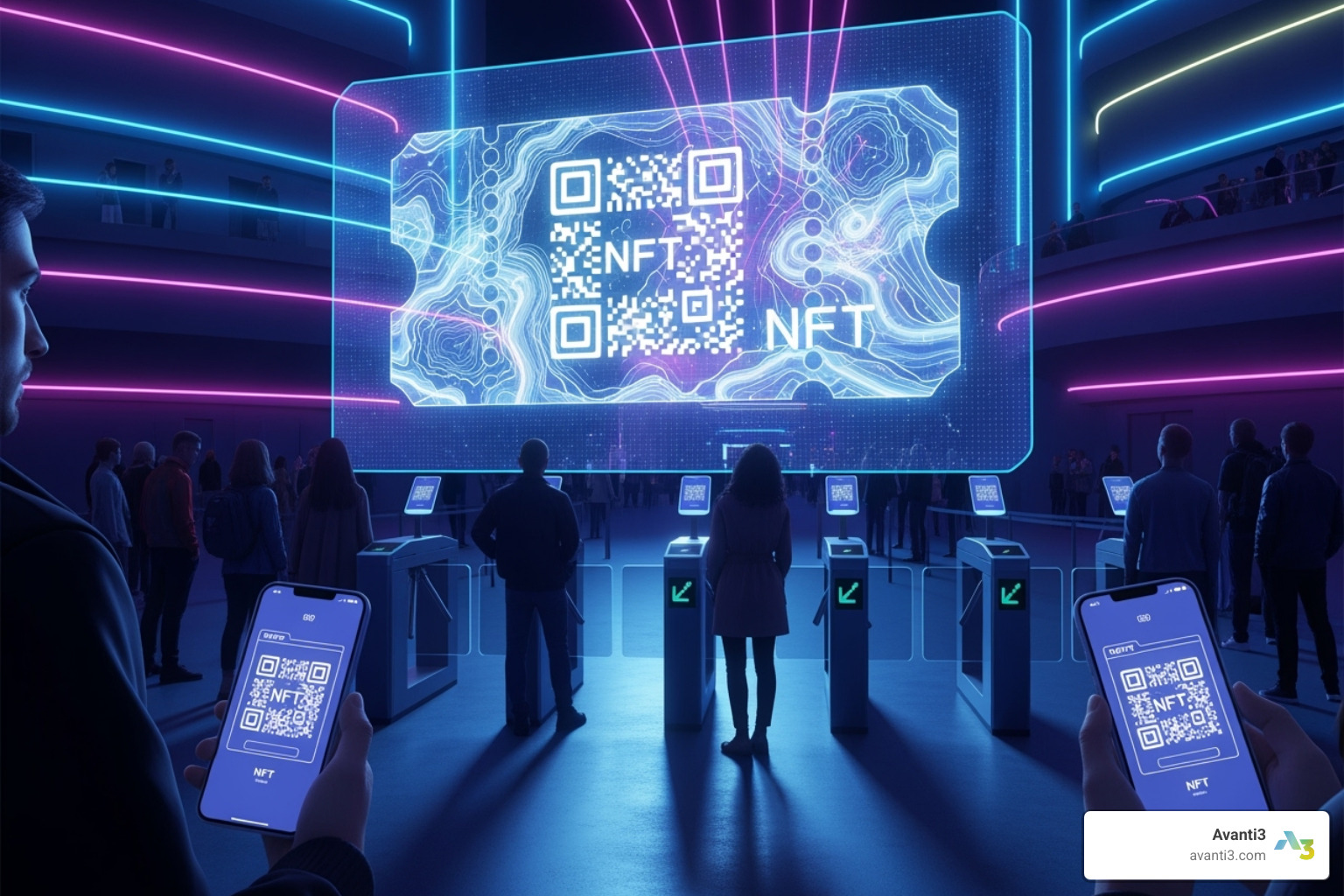
Here are key features we should prioritize:
- Wallet Compatibility: Our chosen platform must support a wide range of popular Web3 wallets (e.g., MetaMask, Coinbase Wallet, etc.) to ensure broad accessibility for attendees. A seamless experience for fans means they can easily receive, store, and transfer their NFT tickets.
- Fiat and Crypto Payments: To cater to all potential attendees, the platform should ideally offer versatile payment options. While crypto payments are a natural fit for NFTs, allowing purchases with traditional fiat currency (credit/debit cards) is crucial for mainstream adoption. This bridges the gap for non-crypto native users, making our events accessible to everyone.
- Metaverse Integration: The future of events increasingly intertwines with virtual worlds. Gartner predicts that 25% of people will spend at least one hour per day in the metaverse by 2026. Our platform should be capable of integrating with metaverse platforms, enabling NFT tickets to grant access to virtual concerts, exclusive digital spaces, or even serve as virtual merchandise. This expands our total addressable market beyond geographical limitations.
- Customization Tools: We need the ability to customize the look and feel of our NFT tickets, event pages, and redemption processes. This ensures our brand identity shines through and allows us to create unique, art-like tickets that fans will cherish. Look for platforms that offer dynamic NFT capabilities, allowing us to update artwork or embedded content before, during, or after the event.
- Data Analytics: One of the powerful, often overlooked benefits of NFT ticketing platforms is the rich data they provide. Every transaction on the blockchain is a transparent, immutable record. Our platform should offer personalized reporting and analytics dashboards, giving us valuable insights into audience demographics, resale activity, and fan behavior. This data is invaluable for optimizing future events and refining our marketing strategies.
- Scalability: As our events grow, our ticketing solution must be able to handle increasing volumes of transactions without compromising speed or efficiency. The underlying blockchain technology (e.g., Polygon for its cost-effectiveness and speed) and the platform’s infrastructure should be robust enough to support our ambitions.
- Programmable Utility: Beyond just entry, we want our NFTs to deliver ongoing value. The platform should facilitate programming additional utilities into the NFT, such as granting access to exclusive communities, future discounts, or real-life claimable items. This improves the long-term engagement with our audience.
By carefully evaluating these features, we can select an NFT ticketing platform that not only solves existing problems but also open ups exciting new possibilities for our events. We’re always exploring how to integrate cutting-edge technologies like augmented reality NFTs to create truly immersive experiences for our clients.
Conclusion: Your Next Steps into the Future of Events
The journey we’ve taken through NFT ticketing platforms reveals something exciting: we’re not just fixing broken systems, we’re building something entirely new. From eliminating counterfeit tickets to creating digital collectibles that fans treasure long after the show ends, this technology transforms how we think about events.
The transformative potential here goes far beyond solving today’s problems. Yes, we’re stopping scalpers and fraudsters in their tracks. But we’re also opening doors to improved fan experiences that were impossible before. Imagine your attendees holding lifetime passes, accessing exclusive content, and building genuine communities around your events.
For event organizers, the new revenue models are game-changing. Those perpetual royalties from secondary sales? That’s money that used to disappear into scalpers’ pockets now flowing back to you. The data insights from blockchain transactions give you crystal-clear pictures of your audience behavior.
I won’t sugarcoat it – there are challenges to steer. User adoption remains the biggest hurdle, especially for audiences who haven’t dipped their toes into Web3 yet. But here’s the thing: the technology is getting friendlier every day. Platforms now offer familiar payment methods and interfaces that feel natural to use.
The momentum is undeniable. Major players have already proven there’s real demand, with collections selling for millions. As more people spend time in digital spaces, NFT ticketing platforms become the natural bridge between physical and virtual experiences.
The future of events isn’t just about better tickets – it’s about creating lasting connections between creators and fans. It’s about building sustainable revenue streams and communities that thrive long after the lights go down.
Ready to transform your events? At Avanti3, we’ve helped countless creators and brands steer this exciting landscape. Build the next generation of fan experiences with our digital engagement platforms and find what’s possible when technology meets creativity.

